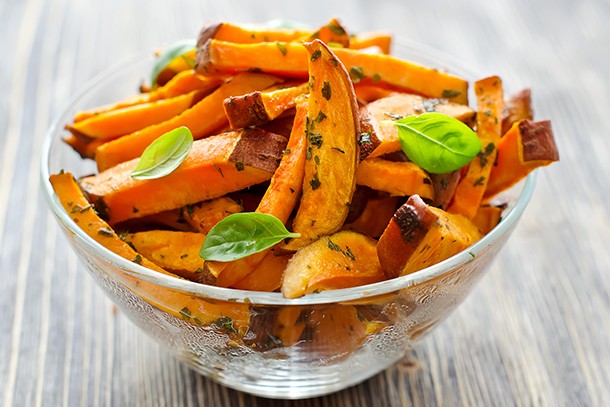Can Diabetics Eat Potatoes; 5 Fabulous Guilt-free Low GI Options
HOME | DIABETES EDUCATION | CAN DIABETICS EAT POTATOES?
Can You Consume Potatoes If You Have Diabetes?
Whether baked, mashed, fried, boiled, or steamed, potatoes are among the most popular foods in the human diet plan. Can diabetics eat potatoes?
They’re abundant in potassium and B vitamins, and the skin is a terrific source of fiber.
If you have diabetes, you might have heard that you must restrict or prevent potatoes.
There are lots of mistaken beliefs about what individuals with diabetes ought to and should not consume. Lots of people presume that since potatoes are high in carbohydrates, they’re off-limits if you have diabetes.
The fact is, individuals with diabetes can consume potatoes in lots of types, however it is very important to comprehend the impact they have on blood glucose levels and the part size that’s proper.
This short article informs you whatever you require to learn about potatoes and diabetes.
How do potatoes impact blood glucose levels?
Like any other carb-containing food, potatoes increase blood glucose levels.
When you consume them, your body breaks down the carbohydrates into easy sugars that move into your blood stream. This is what’s typically called a spike in blood sugar levels.
The hormonal agent insulin is then launched into your blood to assist transfer the sugars into your cells so that they can be utilized for energy. Can diabetics eat potatoes?
In individuals with diabetes, this procedure is not as efficient. Rather of sugar vacating the blood and into your cells, it stays in flow, keeping blood glucose levels greater for longer.
Consuming high-carb foods and/or big parts can be destructive to individuals with diabetes.
Improperly handled diabetes is connected to heart failure, stroke, kidney illness, nerve damage, amputation, and vision.
It’s normally suggested that individuals with diabetes restrict their absorbable carbohydrate consumption. This can vary from an extremely low carbohydrate consumption of 20– 50 grams daily to a moderate constraint of 100– 150 grams each day.
The specific quantity differs depending upon your dietary choices and medical objectives.
The number of carbohydrates remain in potatoes?
Potatoes are a high carbohydrate food. The carbohydrate material can differ depending on the cooking technique. Can diabetics eat potatoes?
Here is the carbohydrate count of 1/2 cup (75– 80 grams) of potatoes prepared in various methods:
- Raw: 11.8 grams
- Boiled: 15.7 grams
- Baked: 13.1 grams
- Microwaved: 18.2 grams
- Oven-baked french fries (10 steak-cut frozen): 17.8 grams
- Deep-fried: 36.5 grams
A typical little potato (weighing 170 grams) includes about 30 grams of carbohydrates and a big potato (weighing 369 grams) around 65 grams.
Therefore, you might consume more than double the variety of carbohydrates noted above in a single meal. Can diabetics eat potatoes?
In contrast, a single piece of white bread includes about 14 grams of carbohydrates, 1 little apple (weighing 149 grams) 20.6 grams, 1 cup (weighing 158 grams) of prepared rice 28 grams, and a 12-ounce (350-ml) can of soda pop 38.5 grams.

Are potatoes high GI?
A low GI diet plan can be a reliable method for individuals with diabetes to handle blood sugar level levels. Can diabetics eat potatoes?
The glycemic index (GI) is a procedure of just how much a food raises blood glucose compared to a control, such as 3.5 ounces (100 grams) of white bread.
Foods that have a GI higher than 70 are thought about high GI, which suggests they raise blood glucose quicker. On the other hand, foods with a GI of less than 55 are classified low.
In basic, potatoes have a medium to high GI (20 ).
The GI alone isn’t the finest representation of a food’s impact on blood sugar levels, as it does not take into account part size or cooking approach. Rather, you can utilize the glycemic load (GL).
This is the GI increased by the real variety of carbohydrates in a part, divided by 100. A GL of less than 10 is low, while a GL higher than 20 is thought about high. Typically, a low GI diet plan intends to keep the everyday GL under 100.
Potato range and the GI and GL
Both the GI and GL can differ by potato range and cooking approach.
A 1 cup (150 gram) serving of potato might be high, medium, or low GL depending on the range:
- High GL: Desiree (mashed), french fries
- Medium GL: white, Russet Burbank, Pontiac, Desiree (boiled), Charlotte, potato crisps, instantaneous mashed potato
- Low GL: Carisma, Nicola
If you have diabetes, picking ranges like Carisma and Nicola is a much better choice to slow the increase of blood sugar level levels after consuming potatoes.
You can inspect the GI and GL of various kinds of potatoes through this site.
How to decrease the GI and GL of a potato
The method a potato is prepared likewise impacts the GI and GL. This is since cooking modifications the structure of the starches and hence how quick they’re taken in into your blood stream.
In basic, the longer a potato is prepared the greater the GI. Boiling or baking for long durations tends to increase the GI. Can diabetics eat potatoes?
Cooling potatoes after cooking can boosts the quantity of resistant starch, which is a less absorbable kind of carbohydrates. This assists decrease the GI by 25– 28%.
This suggests that a side of potato salad might be somewhat much better than french fries or hot baked potatoes if you have diabetes. French french fries likewise load more calories and fat due to their cooking technique.
In addition, you can reduce the GI and GL of a meal by leaving the skins on for additional fiber, including lemon juice or vinegar, or consuming combined meals with protein and fats– as this assists slow the food digestion of carbohydrates and the increase in blood glucose levels.
Including 4.2 ounces (120 grams) of cheese to a 10.2 ounce (290 gram) baked potato reduces the GL from 93 to 39.
This much cheese likewise consists of 42 grams of fat and will include almost 400 calories to the meal.
It’s still needed to think about the general number of carbohydrates and the quality of the diet plan, not simply the GI or GL. If managing weight is among your objectives, your overall calorie consumption is likewise essential.
Dangers of consuming potatoes
It’s safe for many individuals with diabetes to consume potatoes, it’s crucial to think about the quantity and types you take in. Can diabetics eat potatoes?
Consuming potatoes both boosts your threat of type 2 diabetes and might have unfavorable results on individuals with existing diabetes.
One research study in 70,773 individuals discovered that for every single 3 portions weekly of boiled, mashed, or baked potatoes, there was a 4% boost in the danger of type 2 diabetes— and for french fries, the threat increased to 19%.
In addition, fried potatoes and potato chips consist of high quantities of unhealthy fats that might increase high blood pressure, lower HDL (great) cholesterol, and cause weight gain and weight problems– all of which are related to cardiovascular disease.
This is especially hazardous for individuals with diabetes, who typically currently have actually an increased threat of heart problem.
Fried potatoes are likewise greater in calories, which can add to undesirable weight gain.
Individuals with type 2 diabetes are frequently motivated to keep a healthy weight or reduce weight to assist handle blood glucose and minimize the threat of issues.
French fries, potato chips, and other potato meals that utilize big quantities of fats are best prevented.
If you’re having difficulty handling your blood glucose levels and diet plan, speak to a doctor, dietitian, or diabetes teacher.

Great replacements for potatoes
You can consume potatoes if you have diabetes, you might still desire to restrict them or change them with much healthier alternatives.
Try to find high fiber, lower carbohydrate, and low GI and GL foods like the following (33 ):
- Carrots and parsnips. Both are low GI and GL and have less than 10 grams of carbohydrates per 2.8-ounce (80-gram) serving. They’re terrific boiled, steamed, or baked.
- Cauliflower. This veggie is an outstanding option to potato either boiled, steamed, or roasted. It’s really low in carbohydrates, making it a fantastic alternative for individuals on an extremely low carbohydrate diet plan.
- Pumpkin and squash. These are low in carbohydrates and have a low to medium GI and a low GL. They’re an especially excellent replacement for baked and mashed potatoes.
- Taro. This root is low in carbohydrates and has a GL of simply 4. Taro can be sliced very finely and baked with a little oil for a much healthier option to potato chips.
- Sweet potato. This vegetable has a lower GI than some white potatoes and differs in between a medium and high GL.
Another great way to prevent big parts of high carbohydrate foods is to fill a minimum of half of your plate with non-starchy veggies, such as broccoli, leafy greens, cauliflower, peppers, green beans, tomatoes, asparagus, cabbage, Brussels sprouts, cucumbers, and lettuce.
The bottom line
Potatoes are a flexible and scrumptious veggie that can be taken pleasure in by everybody, consisting of individuals with diabetes. Can diabetics eat potatoes?
Since of their high carbohydrate material, you need to restrict part sizes, constantly consume the skin, and select low GI ranges, such as Carisma and Nicola.
In addition, it’s finest to stick to boiling, baking, or steaming and prevent fried potatoes or potato chips, which are high in calories and unhealthy fats.
If you’re having a hard time to make healthy options to handle your diabetes, consult your doctor, dietitian, or diabetes teacher.



